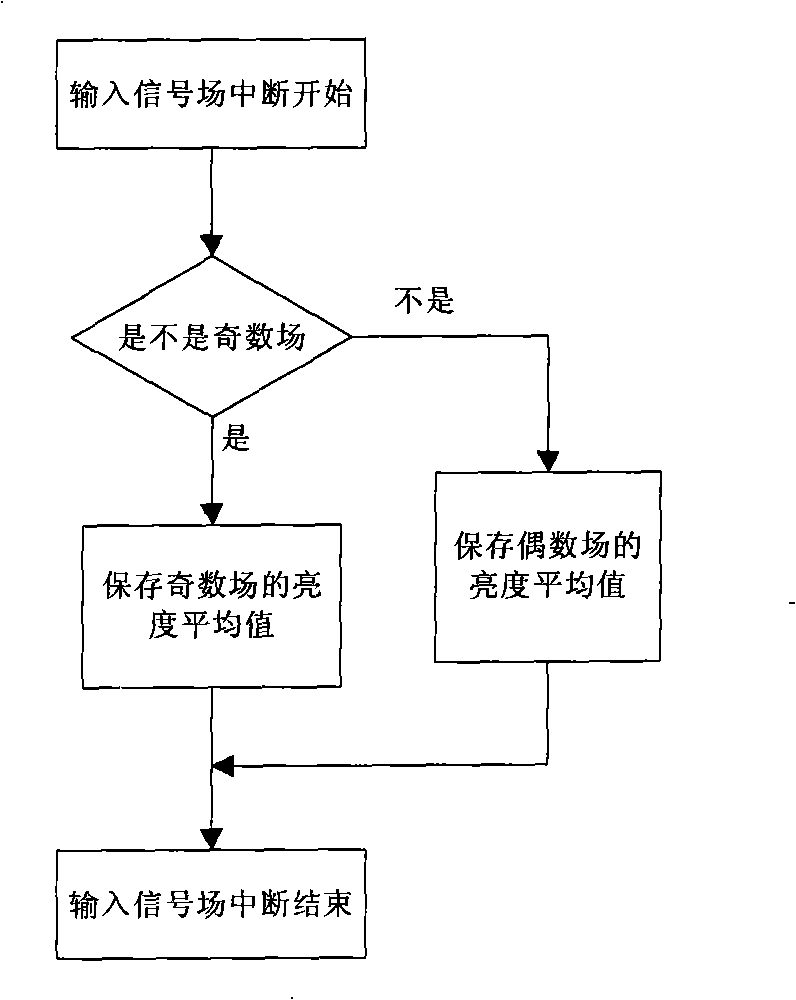Brightness automatic compensating method of television image dark field
A TV image and automatic compensation technology, applied in TV, color TV, image communication, etc., can solve problems such as increased image brightness, unclear scene objects, easy eye fatigue, etc., to reduce eye fatigue and improve intelligence Effect
- Summary
- Abstract
- Description
- Claims
- Application Information
AI Technical Summary
Problems solved by technology
Method used
Image
Examples
Embodiment Construction
[0018] The purpose of the present invention is to start the brightness compensation and automatically increase the brightness parameters when the TV program has a dark field, so that the audience can watch TV clearly; when the TV program returns to the bright field, it can automatically turn off the brightness compensation and return to normal Brightness, to prevent image highlight distortion.
[0019] The main problems that need to be solved are as follows:
[0020] 1. The distinction between dark field and bright field images.
[0021] The image signal is constantly changing. To control the brightness, the brightness value of each field must be known, but the image signal is divided into interlaced and progressive signals, so the brightness value of each frame of the image must be used as a reference. The interlaced signal is divided into 480i, 576i and 1080i, so the average brightness of a single pixel is proposed as the brightness measurement standard of a frame of image ...
PUM
 Login to View More
Login to View More Abstract
Description
Claims
Application Information
 Login to View More
Login to View More - R&D
- Intellectual Property
- Life Sciences
- Materials
- Tech Scout
- Unparalleled Data Quality
- Higher Quality Content
- 60% Fewer Hallucinations
Browse by: Latest US Patents, China's latest patents, Technical Efficacy Thesaurus, Application Domain, Technology Topic, Popular Technical Reports.
© 2025 PatSnap. All rights reserved.Legal|Privacy policy|Modern Slavery Act Transparency Statement|Sitemap|About US| Contact US: help@patsnap.com


